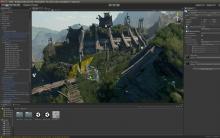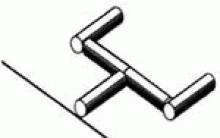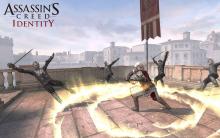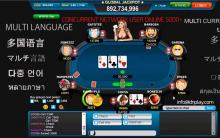As can be seen from the picture after the transmission of the command frame, it is necessary to continue reading bytes (NCR) from MicroSD before receiving an answer (R1), while the CS level must be active "0".
Depending on the command index, the answer may not only be R1 (see the main command set) on the CMD58 answer R3 (R1 and the final 32-bit value of OCR), and some commands need more time NCR and they will answer R1b.. This is the answer R1, followed by the employment flag (the signal on the "DO" line is held by a low-level card while the internal process continues). The host controller should wait for the end of the process until "DO" does not switch to a high level state (i.e. wait for 0xFF). As well as R2 when requesting status status Status.
The answer R1 contains 1 byte, its structure can be viewed in the table below. The answer R2 consists of two bytes, the first byte R1 and the second R2 (see table structure R2). And the answer is R3, respectively, from 5 bytes.

Answer R1 with 0x00 valuemeans the successful completion of the command, otherwise the corresponding flag will be installed.
Response structure R1.

R2 response structure.

Initialization in SPI mode.
After resetting and pumping the power, the MMC Map is installed in the MMC (Serial Peripheral Interface) mode, to transfer to the SPI mode, you must do the following:
- After reaching nutrition 2.2 V, wait at least milliseconds, set a high level on the DI and CS lines and give about 80 pulses to the CLK output. After such a procedure, the card will be ready to accept the native command.
- Send the CMD0 command (software reset). The card must respond (R1) with a set of waiting bits (0x01).
- Send the CMD1 command (to start card initialization). Wait for the 0x00 response to confirm the completion of the processinitialization.
Let me remind you that the CMD0 command must contain the CRC correct field. It makes no sense to count on, since there are no arguments in this team, it constantly has a value of 0x95. When the card enters the SPI mode, the CRC function will be disabled and will not be checked. The CRC option can be turned on with the CMD59 command.
As a result, the CMD0 command will look like this: 0x40.0x00.0x00.0x00.0x00.0x95.
- team index - 0x40.
- argument - 0x00.0x00.0x00.0x00.
- CRC-0x95.
As for 80 pulses, they can be formed by transmitting by SPI value 0xFF10 times in a row When set high levels on the linesDi and cs.
After idle more than 5 ms, the memory card goes into an energy-saving mode, and can only accept CMD0, CMD1 and CMD58 commands. For this, the initialization process (CMD1) must be repeated almost every time when reading / writing a data block or check the status of the map.
For SDC cards in case of deviation of the commandCMD1 It is recommended to use the ACMD41 command.
The initialization process itself may take relatively long time (depending on the volume of the map) and can reach hundreds of milliseconds.
Reading and writing a block of data.
By default, in SPI mode, the exchange between the microcontroller and the card is carried out by blocks of 512 bytes, by this to record even one byte you will have to first read the entire block and changing the bytes to overwrite it back. The block size can be changed in the CSD register of the memory card.
Waiting for the addressing error when performing read / write commands, it is necessary that the address indicated clearly starts the sector. To do this, you can reset the bit "0" 3 byte of the address of the sector, i.e. Do it even, and the younger should always have a value of 0x00.
Reading data block.
The data block read algorithm is as follows:
- After confirmation of the initialization, we transmit the CMD17 command (answer R1), with the address of the required sector.
- We transmit 0xFF to receiving the start byte 0xfe.
- We accept the data block (by suturing 512 bytes) and 2 CRC bytes.
The CRC value is not necessary, but the adoption procedure (transmission of 0xFF from the MC) is necessary.
Reading block.

Record data block.
The data block record algorithm is as follows:
- If a simple card has been more than 5 ms by sending a CMD1 command (response R1).
- After confirmation of the initialization, we transmit the CMD24 command (answer R1), with the address of the required sector.
- We transmit the start byte 0xfe.
- We transmit the data block (on suturing 512 bytes) and 2 CRC bytes.
- We get byte confirmation recording.
- We are waiting for the end of the record (byte changes 0x00).
The data block may be less than 512 bytes when the block length changes the CMD16 command.
The CRC value is not necessary, but the transfer procedure by any values \u200b\u200bis necessary.
Downtime estimate can be programmatically and not to do, and immediately give the initialization command. The software implementation faced an incorrect entry, for some reason all the bytes were recorded in the Sector with the shift to the left. The problem was solved only by passing the start bit (0xF) twice.
Record block.

Confirmation byte when writing a data block.

Recording / reading multiple blocks in a row.
Using commands CMD18., CMD25 You can read / write several blocks in a row or the so-called multilox read / write. If the number of blocks has not been specified, the read / write process can be stopped by the CMD12 commands when reading, as well as the transmission of the marker " Stop Tran"When recording, respectively.
Practical use.
The practical application of memory cards is quite wide. In the last of its design, MicroSD involved to write indications from various sensors (temperature, alarm) during the day every hour. The data is stored as follows:
- The year is taken by the last two digits - it corresponds to the first (main) byte address of the memory card sector.
- Month, two digits - this corresponds to the second, senior byte address of the memory card sector.
- Day, two digits are multiplied by 2 (in order to avoid outside the border of the sector) - this is the third, middle byte address of the memory card sector.
- Junior, the fourth byte always "0".
As a result, data segments are simplified by date, it is enough just to translate the request to the sector address and read from the card. With this method, the data can be stored for several years. True there are also disadvantages, a lot of unused place remains. Although if desired, you can use for other tasks.
Who needs to throw the code fragment on the assembler for 18 peaks.
Questions can be set on ..
If you are a private person, our experts will be able to provide broad spectrum of computer services. Our experienced masters are ready to solve any problem that can arise with your system unit or laptop.
Call:
As computer services provided by us You may not doubtAfter all, we have experienced and attentive masters who do not have computer assistance and carry out computer repair, of course, using the latest professional equipment.
Join:
Configuring and repairing computers at home - Calling a computer master
Installing software
Repair of motherboard
Computer service services
Replacing the power supply
Prayed computer? No problem. Our specialists know how to help you. To repair computers, we have all the necessary spare parts from certified manufacturers. Departure to the house occurs very quickly.
Computer help at home 250 rubles.
Urgent repair of laptops - save from fluids and replace parts
Replacing the matrix
Cleaning keypad
Replacement battery
Power supply repair
If you have broken a laptop, then our experienced masters will quickly repaid it. Even if you accidentally poured it with liquid, and the battery and hard disk burned out in it, our masters quickly return to your laptop performance.
Urgent repair of laptops 550 rubles.
Removal and treatment of computer viruses - removal of banners
Installation of antivirus protection
Treatment of viruses
Removing Trojan
Setting Firewall
No computer is insured against malicious software attacks. Cunning viruses can violate the computer's work strongly, lead to data loss, but our masters will effectively remove viruses and install anti-virus protection.
Removing viruses 270 rubles.
Installing and configuring Windows to a computer or laptop
Installing Windows XP, Vista, Seven
Setting up windows
Installation of drivers
Restoring the system after failure
If you do not have the ability to install the Windows operating system yourself, simply contact our specialists, and they will install any licensed version of Windows and will produce all the necessary settings.
Installing Windows 260 rubles.
Save your data - Restore information
From a hard disk
After formatting
From flash drives and memory cards
After deletion
Regardless of what caused data loss, and on which carrier it happened this unpleasant phenomenon, our qualified wizards will restore all your data while maintaining the confidentiality of files on the computer.
Data recovery 410 rubles.
IT services for organizations and subscriber services
- Computer Administration
- Repair of periphery
- Information Security
- Network configuration
It is difficult to imagine a successful business without competently organized IT services. After all, very much depends on well-working computers and a well-organized data security system. Contact us for IT services - we will not let.
Different memory cards are typical representatives of external storage devices on flash memory. Today, many of the devices in our use, such as: cell phones, cameras, media and MP3 players and others use as a media memory card information.We believe that it will not be superfluous to know the features that various types of memory cards possess each of which is intended for a specific device.
What inside these cards ...
Flash memory is a kind of data keepers, the main goal in the use of which, increase the functionality of modern mobile devices. This allows manufacturers to lead the market and produce in demand by users. The huge advantage of memory cards is the lack of requirements for additional nutrition, they are satisfied with what is already in the device where they are used. The drive of memory is easily filled with information and is also easily freed from it. It does not have mechanical driving parts, so it requires a minimum of nutrition and its work is practically not limited. Memory cards allow you to rewrite information from tens of thousands of cycles to a million.The shelf life of data on these devices has enough long and ranges from 20 to 100 years. Another advantage is a small sensitivity to external influences, vibrations and shocks.
But one of the most important advantages of memory cards is their compactness. Having a thickness from three millimeters and less, the card has a maximum length in just four centimeters.
Variety of varieties
In the documentation for your device, there is always a description or abbreviation of the type of memory cards that this device can use. Deciding with the map type, select the manufacturer, focusing on the most famous and already proven manufacturers. Some of these memory cards are equipped with various adapters that significantly increase functionality and allow you to use a memory card in other devices.To date, there are seven major types of memory cards.
CompactFlash.Otherwise, CF consisting of two types - CF Type I and CF Type II. These varieties of memory cards are most common due to their features that are dramatically distinguished them from other types of compact information media. Having a high data exchange rate and providing a rather high amount of memory These cards possess, together a very low price regarding megabytes / ruble, which is very attractive as for those who produce mobile devices, that for those who use them. For all available data, this is currently the most common type of memory cards.

IBM MicroDrive. - Another kind of memory cards, for which it does not quite suit this definition, format COMPACT FLASH TYPE II Due to the fact that is a practically reduced copy of the winchester. Possessing the cost much lower, other types of memory cards, but is a less reliable device due to moving parts. Another negative feature of this card is higher power consumption. Therefore, rare manufacturers use this species in their products whose connectors correspond to CF Type II.



SmartMedia. - Also is a representative of inexpensive and compact flash cards (thickness of just one millimeter). The low cost of these cards is primarily determined by the use of available components, but this, in turn, is also a disadvantage, since the use of low-cost components can lead to abnormal cases and can cause loss of information.

Multimedia Card (MMC) - Here is perhaps one of the best representatives of the memory cards of this class, the main advantages of this type of memory cards are small dimensions and low power consumption. True, all this has an impact on the rate of information exchange. Dimensions of these cards - 24x32x1.4 mm, and short 24x18x1,4 mm. Use them mainly in cell phones and other devices that have very compact sizes.

SecureDigital (SD) - With their dimensions, these memory cards slightly inferior to MMS, but are more preferable from the speed of the exchange rate when working with a large size of the contained data. This feature dictates and higher prices for them.

MicroSD. - Practically in its characteristics is not inferior to SD, while having smaller sizes. Almost with all the memory cards of this type are included in the SD adapter.
SD and MMC. Back compatible, so MMC memory cards can be installed and operated instead of SD, but inverse ars are not possible. Moreover, in the latest versions of devices manufactured by manufacturers (phones, players) put only the SD type connector to enter the versatility of the card (it is even indicated in the documentation as the SD / MMC connector).

MemoryStick. - Made specifically and is used almost only in devices manufactured by Sony. Dimensions of this memory card - 24 * 32 / 1.4 (2.1) mm., The card is very protected from outside interference, and on its performance it is very similar to a memory card - SecureDigital (SD). However, its weak place is a small amount of stored information.
According to the latest statistics on the most common, generally accepted and used types of types of types CompactFlash. and SD / MMC..
For ease of evaluation of the appearance and dimensions of various types of cards, we will show them clearly:

1 \u003d MMC Plus (Multimedia Card)
2 \u003d SD MINI (Secure Digital)
3 \u003d SD Micro (Secure Digital)
4 \u003d MMC Mobil (Multimedia Card)
5 \u003d MS PRO (Memory Stick Pro)
6 \u003d MS PRO DUO (Memory Stick Pro Duo)
7 \u003d RS MMC (Multimedia Card)
8 \u003d SM (Smart Media)
9 \u003d CF (Compact Flash)
10 \u003d SD (Secure Digital)
What still choose? ...
As a rule, this task is one of the easiest things, you just need to know which type of memory cards can be used in the device you purchased. You can easily learn from the documentation for your device or from the inscriptions on the housing. The only thing you can do is to choose the manufacturer's company based on your preferences.What volume...?
In general, the question is trivial. You can read by the number of photos, time of music or video, but as a rule, that I would not have chosen always becomes little.The most important thing is to determine how much you are ready to spend on it, most of the choice decreases at once several times. After all, with a large amount of stored information, high speed of exchange it, minimal dimensions, the price may be too high for the you can afford it. Therefore, just select the most more volume that you can afford.
Introducing from traceable tendencies among memory cards, in addition to itself, of course, their further miniaturization is their further miniaturization, in the light of which the prospects of the most popular compactflash carriers seem increasingly foggy. In this article we will try to evaluate the performance of two MMC and SD memory cards of one of the largest manufacturers of Pretec Corporation. But not only they will become the object of our attention. In such a fine case, as a clarification of the actual speed of memory cards, very significant attention to the final results always have devices that read information from them. Unfortunately, the speed of reading and writing compact media we have to determine indirectly, and not directly. The card reader becomes "external" in the chain, which has its own characteristics. It is he who in most cases is the reason that we cannot achieve the speed of memory cards declared by manufacturers. For this reason, we have a particular interest to the new PRETEC card reader, which we decided to compare in efficiency with the device of SanDisk, we used earlier. In order for the picture here more objective, we decided to produce and re-measure the speed of the memory card previously tested TURBO SD A-DATA companywhich then showed not so high results that could be calculated on the basis of the claimed characteristics.
Pretec E-Disk II USB Card Reader

Start the view of the participants this time we decided with the new card reader E-Disk II. At first glance it may seem that you are dealing with a regular USB flash drive, so this miniature drive is similar to this category of devices in appearance and sizes. However, with closest communication it becomes clear that it is not. In the "streamlined" case from translucent blue plastic under the folding lid there is a compartment to install the memory cards of two categories.
Under the removable cap, which however continues to remain hanging on a thin metal chain, a USB connector is detected. At the end of the chain there is an oval metal plastic with the name of the manufacturer and a miniature "carabiner", thanks to which you can use a card reader as an ordinary keychain. Finishing the description of this memory card reader, you can mention the presence of a LED indicator of the operation mode.
Among the technical characteristics that are not mentioned by us, it is necessary to note the support of the USB 2.0 interface. Naturally, this stylish card reader can be used not only for its direct purpose to read the SD and MMC memory cards, but also as a regular USB flash drive. To do this, it is only necessary to leave one of the above-mentioned media in it. :)
The estimated retail cost of card reader is equal to 11 cu
Pretec MMC Plus 1 GB

The MMC Plus family memory card, which fell to us, did not have an inscription on it 266x, denoting the transfer speed, which would allow it to completely identify with the carrier presented on the manufacturer's website. There are no mention of speed characteristics and on the package. In such a situation, the testing we spend is particularly relevant and will contribute to the establishment of truth.
The estimated retail cost of a 2 GB memory card is 150 cu.
Pretec SD 133x 2 GB

The SECURE DIGITAL card family includes carriers of 256 MB to 4 MB. The declared transfer rate of 133x indicates the reacing of the turn of 20 MB / s. Memory cards are made based on SLC NAND technology (65 nm).
The estimated retail cost of a 2 GB memory card is 170 cu.
Testing technique
List of programs used for testing:
FC-Test version 1.0;
AIDA version 3.95.
During operation, a test platform of the following configuration was used:
Motherboard - Albatron PX865PE PRO;
Central processor - Intel Pentium 4 2.4 GHz;
Hard disk - IBM DTLA-307015 15 GB;
Graphic adapter - Radeon 7000 32 MB;
RAM - 256 MB;
Operating system - Microsoft Windows 2000 with Service Pack 4.
Media testing occurred using SanDisk ImageMate 5-in-1 Reader / Writer and Pretec E-Disk II Card Reader.
FC-TEST.
During the test using the FC-TEST program, the real characteristics of the speed of memory cards, and, in this case, through their results and the effectiveness of the card reader you are interested in. With this utility, situations related to the use of three patterns reflecting the effect of dimensions (1, 10 and 100 MB) and the number of files (1, 10 and 100) to the speed of carriers are reproduced.

First, let's see how media behave when using a pattern consisting of a hundred files one megabyte.

The first diagram presents the results of measuring the recording speed (creation) of files. In the case of using the SDISK card reader, the pretec SD carrier is in the first place, a slightly ahead of his opponent in the face of the A-Data card. We will not carry out a direct comparison between medium-type media, but we note that the PRETEC MMC Plus card at the recording speed is very behind the other two test participants.
The use of the PRETEC card reader E-DISK II leads to a wonderful reincarnation of the accuracy of not very fast devices. All media demonstrate sharply increased recording speed. This is especially clearly seen this on the example of the MMC Plus card, the speed of which increases almost six times, allowing it to climb to the very top of the chart. Very noticeable speed gains and in two other SD media. To a greater extent, this concerns the PRETEC product.

A diagram with the results of measuring the speed of reading a hundred files by one megabyte, in the case of using SANDISK card reader, indicates that according to this indicator, both SD carriers show almost the same speed, but the product Pretec is a little bit ahead. Noticeably lags behind them at the speed of reading MMC memory card.
The use of PRETEC card reader for testing media allows you to get more than a noticeable speed gain in all three participants. This is especially impressive it looks like a MMC memory card. Her read speed rose six times. A good "purchase" was obtained from SD carriers, newly demonstrated almost the same results with a slight advantage of PRETEC card. The speed of reading from both SD carriers has grown almost twice.
We now turn to the consideration of the situation associated with the use of a pattern consisting of ten files for ten megabytes.

The graph results reflecting the speed of recording media using SanDisk card reader, we see that the PRETEC SD memory card is a bit ahead of the A-DATA product. MMC media demonstrates a very modest result.
In the case of using the PRETEC card reader's working device, all media reopened the "second breathing". The MMC memory card is stronger than all. She has an almost six-time growth rate of recording. Pretec SD carrier increases its speed by almost twice, and it is noticeably ahead of his opponent in the face of the A-Data Turbo SD card.

On the next diagram, we see that reading files from media in the Sandisk card reader leads to the fact that both SD memory cards have full equality of results. The MMC medium still shows a stable low recording speed.
The use of PRETEC's new card reader files to read once again led to a very significant increase in performance indicators of all three media. SD card reading speed is equal to each other and about two times more than when using SANDISK card reader. MMC media speed rose by about six times.
It's time to take a look at the speed of the media shown in the case of working with a pattern consisting of one large file of 100 MB.

On the chart at the speed of the memory card on the memory card, the results obtained using the SANDISK card reader say that the Pretec SD carrier slightly overtakes his opponent. The MMC memory card is very low.
Replacing the card reader on the Pretec device leads to a tangible increase in the recording speed in all media. This is especially pronounced by the MMC memory card. Its speed has increased by about six times. Among the SD cards, the card reader was stronger than just all the replacement of the PRETEC product, whose recording speed increased by about two times, and it began to noticeably overtake the carrier of a similar type, produced by A-DATA.

The graph with the results obtained during the measurement of the reading speed of the devices can be seen that in the case of the SANDISK card reader, there is a complete parity to speed between the SD cards and a very noticeable lag on this MMC media indicator.
Once again, we also see the beneficial impact of the work of the PRETEC card reader at the speed of reading all three media we tested. The speed of the SD memory cards increased by about twice, and the MMC media is about six times.
Aida32.
The second stage of our testing is associated with measuring the performance of media using the AIDA32 program. During synthetic tests, we filmed linear reading and recording graphs, as well as access time. Based on the average indicators of the three of these parameters, appropriate charts were built.Pretec MMC Plus: SanDisk ImageMate 5-in-1

Linear Write Speed.
Linear Read Speed.
Average Access Time.
Pretec MMC Plus: Pretec E-Disk II

Linear Write Speed.
Linear Read Speed.
Average Access Time.
Pretec SD 133x: SanDisk ImageMate 5-in-1

Linear Write Speed.
Linear Read Speed.
Average Access Time.
Pretec SD 133x: Pretec E-Disk II

Linear Write Speed.
Linear Read Speed.
Average Access Time.
A-DATA TURBO SD: Pretec E-Disk II

Linear Write Speed.
Linear Read Speed.
Average Access Time.

Let's start considering the results of synthetic tests from the indicators of the middle speed of the linear record.

The diagram is clearly seen that in the case of using SanDisk Card reader, both SD cards demonstrate identical speed. MMC medium speed is very far behind them.
Replacing the card reader to the new product of PRETEC leads to more than a semi-sightened increase in the average linear recording rate in both SD memory cards and approximately six-time MMC media.

The graph with the measurement results of the middle line of linear reading demonstrates in the case of the use of SANDISK card reader, the practical equality of the results in two SD memory cards and a noticeable lag from them MMC media.
The operation of memory cards through the PRETEC card reader gives a tangible, almost double, the increase in the average linear reading rate in the SD carriers that are almost equal to speed. The speed of the MMC card has greatly grown - in this case more than six times.

The measured average access time from the SD carriers in the case of using the SANDISK card reader turned out to be equal and non-disappointment. Some more it is at the MMC card.
It is curious that the application in the work of the PRETEC card reader led to a noticeable decrease in the average access time. This is especially noticeable at the MMC card. The SD media occurred to a lesser extent, but still a trifle, and nice.
Summarizing
In general, the main goal of this test was initially a memory card, but the results obtained in its course are forced first of all to talk about PRETEC E-DISK II card reader. Its work has become a vivid confirmation of the fact that the effective work of the fastest carriers will need an adequate reading and recording device. Our assumptions that during previous testing we did not always succeed in reaching the cards of the performance of the performance declared by manufacturers, it was precisely the fault of the Card Ruclear, in this case a vivid confirmation. Pretec's E-Disk II miniature device turned out to be "on the head" more efficiently than the similar card reader SanDisk ImageMate 5-in-1. It was especially strongly affected at the speed of reading and writing a MMC memory card, whose indicators immediately grew by about six times, reaching 9-10 MB / s. This was somewhat influenced by the SD carriers, where this growth reached a number of situations of approximately two-time magnitude. Due to this, they managed to reach the speed of reading 18 MB / s, which is already quite close to the indicators declared by manufacturers. Here you can also note that the PRETEC SD 133X memory card looked a bit more preferably a-Data Turbo SD, thanks to the greater recording speed.Considering that manufacturers of flash memory carriers are constantly improving their characteristics, one can recommend all buyers of this product to pay close attention and card readers, since old models will not clearly be able to ensure the effective use of new memory cards. One of the first candidates for the acquisition is quite worthy to become Pretec E-Disk II. This compact device will not take a lot of space in your pocket and help the operation of memory cards in the most complete use of their speed characteristics. In addition, this device is capable of performing the functions of a regular USB flash drive, but it is worth the amount of money that will not cause shock from buyers.
Thanks to the company Norma Group for the memory card provided to test for testing and PRETEC card.











SD SDHC MS MS MMC Memory Cards
Sickle and hammer passage 4 endings
Passage of Xenus 2 White Gold Full Passage
Guide and Passage by "Disciples II: Dark Prophecy"
Passage Full Passage of Silent Hill 2